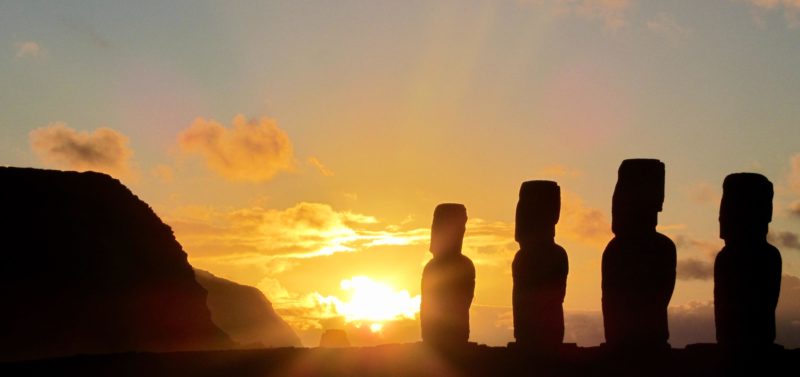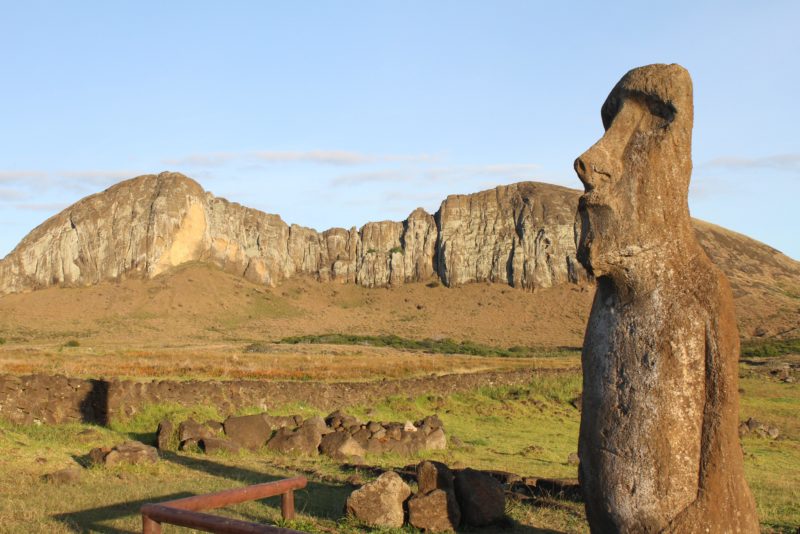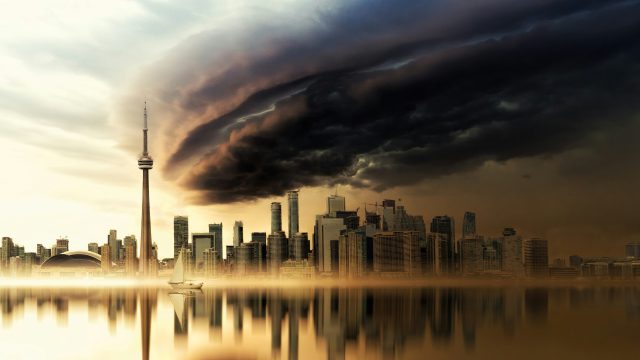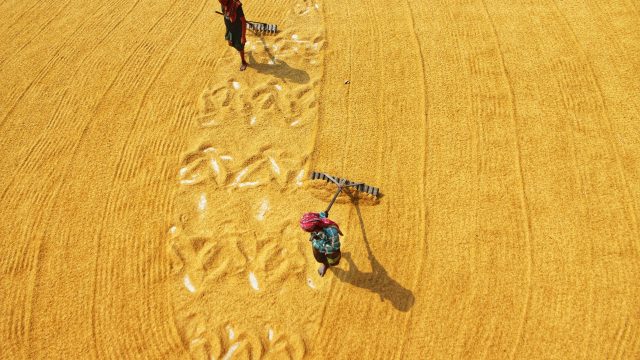To value or not to value, that is the question
What happened to the Rapa Nui of Easter Island, and how can their fate inform our understanding of the value of nature?

The GEC Insights series is a curated collection of articles at the intersection of environment and economics, each written by leading thinkers from the worlds of business, government and civil society. Part of our Economics for Nature project, they bring together diverse perspectives to answer the question: how can we re-design our economies to protect and restore nature?
400 years ago next year, the Dutch explorer Jacob Roggeveen landed on Rapa Nui, more often known as Easter Island. A pinhead in an immense ocean and its history a dot in the timeline of the earth. But what a well-known pinhead. Who doesn’t know the image of the giant moai, the more than 1,000 statues that flock the island?
The genesis of these moai has been an enigma for a long time. It was clear that only a powerful civilization could have built these 9-metre-high statues. However, all that remained on the island was a tiny, ruined population. What had happened?
For over a century different theories have developed. One that gained quite some traction was that of the geographer Jared Diamond, who examined the fate of Rapa Nui in his best-selling Collapse: How Societies Choose to Fail or Survive. According to this theory, the absence of timber was the key to understand Easter Island’s history. Diamond argued that the transport and erecting of the giant sculptures required more palm trees than the island could produce, leading to deforestation and erosion. This undermined the island’s capacity to feed its population and led to the collapse of the civilization on Rapa Nui.
However, Diamond’s account of human folly has been strongly called into question in recent years. An alternative theory suggests that the collapse of the civilization on Easter Island was not caused by deforestation and hunger. The Rapa Nui population was one of great gardeners, that grew luscious gardens and orchards on fertile lava soils, abundant enough to feed itself. But the art of gardening wasn’t of any help when Western visitors arrived at the island. The Westerns brought new diseases to the island and later in time also slave-raids. And according to the alternative theory, it was the combination of these two elements that caused the collapse of Rapa Nui’s civilization, indicating a close alignment with the fate of other
“ Diamond hypothesised that populations collapse because they fail to engage with two crucial questions: What is our long-term plan and what is our willingness to reconsider our core values?”
The aim of this blog is not to come to conclusions on Rapa Nui’s past. But we want to point to a similarity between both theories: The collapse of the civilization wasn’t a deliberate choice, but a consequence of failing to recognise the value in something that was crucially important: Rapa Nui’s scarce natural resources (in the deforestation theory) or its people’s unique management of their ecosystem (the Western domination theory).
Back to the here and now
What can we learn from Rapa Nui’s collapse? Let’s return to Diamond’s theory – not because we think it’s the most convincing, but because Collapse contains not only an analysis of why societies appear to collapse but also the idea of an antidote.
Diamond hypothesised that populations collapse because they fail to engage with two crucial questions: What is our long-term plan and what is our willingness to reconsider our core values? Through the eyes of the Rapa Nui debate we might also add, “what external forces might be at play that can push otherwise stable societies and timeless values out of equilibrium?”
With the global challenges of nature loss and climate change, humanity -as -a -whole is again facing these crucial choices that might mean failure or success. And if we want to succeed, we must ensure to prevent unintended consequence of overexploitation of our resources, natural, human and social.
A new pact between people and nature
In this respect, the current global negotiations on an ambitious nature policy package comparable are relevant, that could lead to a nature version of the ‘Paris Agreement for Climate Change (the Post-2020 Global Biodiversity Framework). The first full draft of this framework recognizes that humanity needs to fundamentally reconsider how it values nature and the services it delivers to people, in order to prevent overuse. Three draft targets on integrating the value of nature into decision-making of government, the private sector and consumers (14, 15 and 16) are crucial to this and will help to align human activities with nature’s capacity to underpin wellbeing for all.

The key idea is that by making the value of nature for society visible to all stakeholders, humanity will better understand its own interests and will redirect its course. By making the value of nature for people visible, we will make better decisions to stop climate change and reverse nature loss. Making the value of nature visible will help humanity, to use Diamond’s words, to succeed and not to fail.
This of course requires that we take all views and sources of knowledge on board. It is therefore not coincidental that a core debate is how indigenous people and knowledge can be authentically brought into this pact. Only if there is a joint understanding of value across all stakeholders in the system, from sector to sector and from geography to geography, and only if there is a consistent rewarding of nature positive outcomes, we can avoid the kind of unintended consequences that doomed Rapa Nui’s and other civilizations.
From understanding to action
The seeds for this joint understanding of the multiple values of nature have been sown over the last decade. The United Nations Statistical Committee now has adopted a new statistical framework to value nature in relation to a countries prosperity (the System of Environmental-Economic Accounting—Ecosystem Accounting (SEEA EA). And the Natural Capital Protocol has been helping companies since 2016 to integrate the value they receive from nature into their decision-making.
To further promote the understanding of the value of nature in the private sector, two ongoing EU-funded projects (Transparent and Align) are standardizing the way impacts and dependencies on nature can be measured and valued by business and finance. Building on the Natural Capital Protocol and using the experience of practitioners, these two initiatives will increase the consistency in the outputs of Protocol applications by businesses and finance. It also reduces the burden for newcomers by providing a clearer scope and approach.
“ To make the value of nature visible to governments, the private sector and all of the worlds’ peoples, is a crucial step towards humanity’s acknowledgement of the values of the resources it depends on, a prerequisite for successful societies.”
The projects’ outcomes together will help redefine what constitutes business success, incorporating the value of nature as well as the people upon which it depends. They will create a common reference of key information to better understand a business’ long-term position, which business can be tracked against it can be followed, and when not followed, business will have to explain why they are not complying. This will facilitate conversations between users of information (investors, consumers, and other stakeholders) and providers of information (business).
To make the value of nature visible to governments, the private sector and all of the worlds’ peoples, is a crucial step towards humanity’s acknowledgement of the values of the resources it depends on, a prerequisite for successful societies. Or better said, for the success of global society, as we are all in this together. How to do this in a standardized way is no longer a challenge but will soon be the new normal in decision-making. Agreement in Kunming of the inclusion of targets 14, 15 and 16 will accelerate this.
To value or not to value. That’s the question.
- Martin Lok and Marta Santamaria, Capitals Coalition


